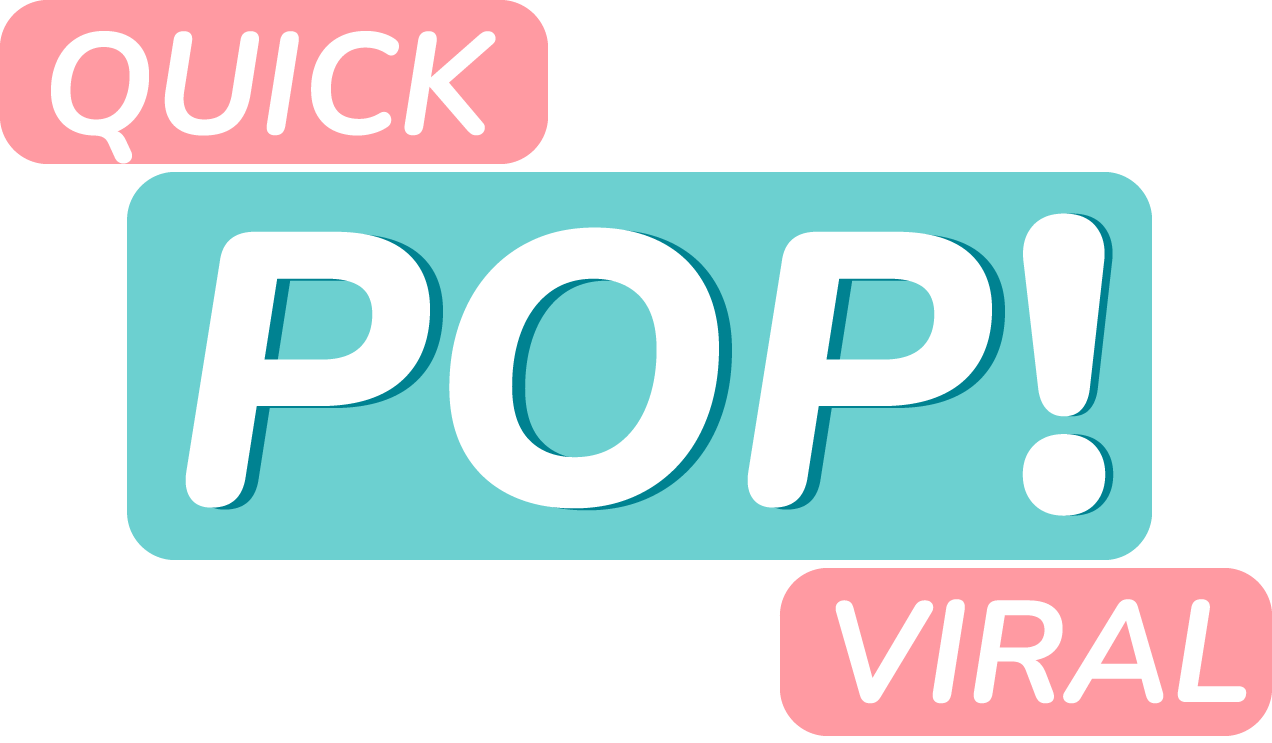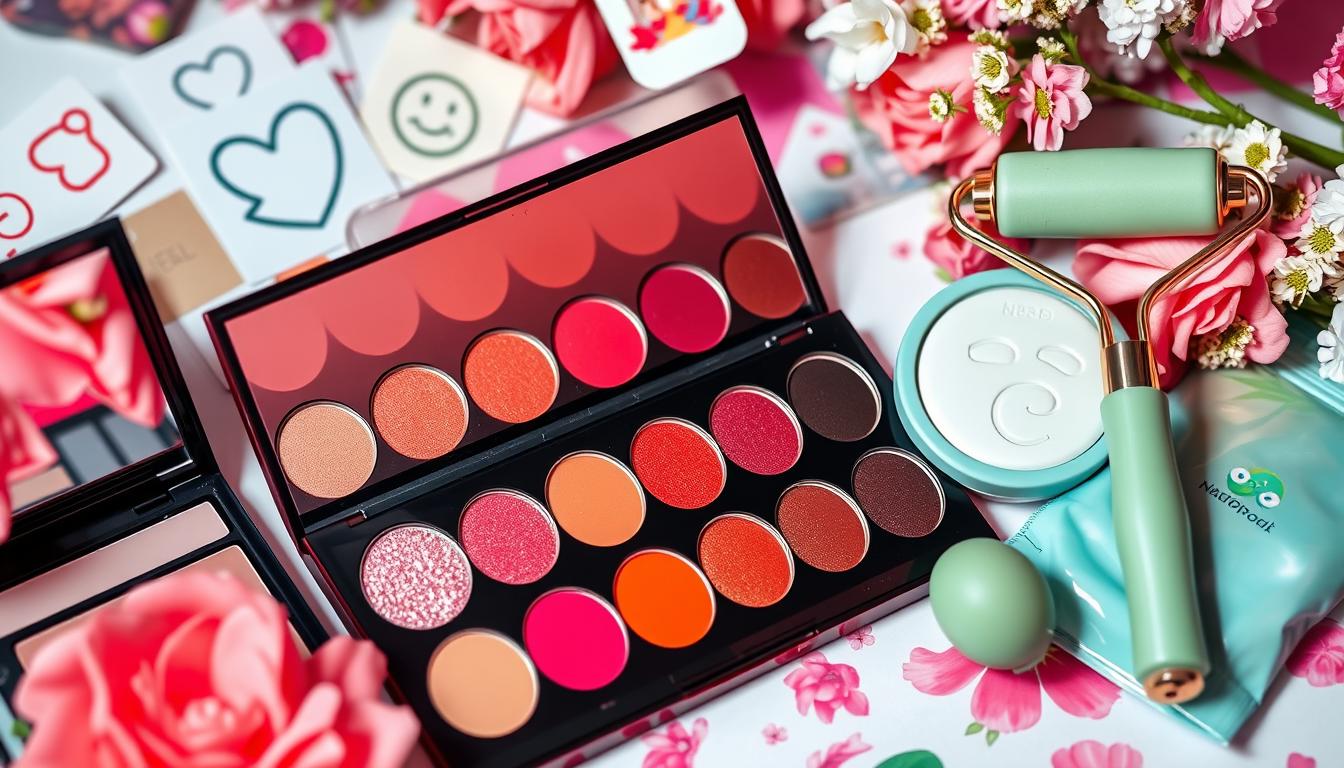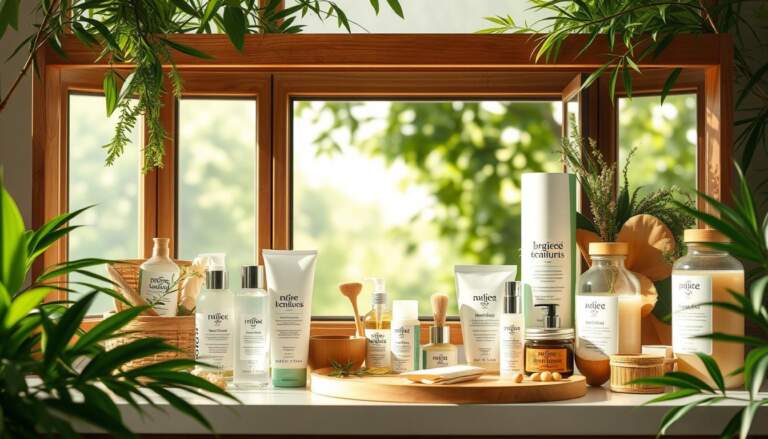The beauty landscape is ever-evolving, and with the burgeoning influence of TikTok, the latest beauty trends are at our fingertips with just a swipe and a tap. As the virtual runway showcases everything from TikTok beauty trends to the resurgence of Y2K glamour, these social media beauty phenomena are not only redefining trending makeup but also revolutionizing skin care trends. With every new viral video, beauty influencers are ushering in a wave of Gen Z beauty aesthetics that are as diverse as they are dynamic. It’s a vibrant scene where the likes of skinimalism promote the natural look and the bold statements made by neon hues captivate Gen Z audiences12.
Key Takeaways
- TikTok’s viral nature has the power to make beauty products instant sell-outs1.
- Influencers like Jeffree Star are redefining industry standards with their massive followings2.
- Social media feedback is becoming a pivotal part of the beauty brand’s market research1.
- Collaborations between influencers and brands are crucial for successful marketing strategies1.
- Skincare trends on TikTok are helping people achieve healthier skin, amplifying influencers’ impact1.
- Purchasing behaviors indicate a strong consumer trust in influencer recommendations, with approximately 49% of consumers buying based on their endorsements2.
- TikTok is leading the way in beauty product sales, with a significant percentage of purchases stemming from the platform2.
The Rise of Skinimalism: Embracing Natural Beauty
The global beauty market is witnessing a significant shift towards skinimalism, a trend that advocates for minimalist skincare, promoting not only natural beauty but an overall streamlined beauty regimen. This approach emphasizes transparency in ingredients and their benefits, aligning with consumers’ growing penchant for authenticity and sustainability3.
With increased awareness of the impacts of excessive product use, beauty enthusiasts are simplifying their routines, focusing on quality over quantity. This shift is not just about reducing the number of products used but also about embracing imperfections and fostering healthier, more balanced skin3.
Skinimalism extends beyond the face; it is also influencing other aspects of personal care. For instance, sales of anti-acne and lash and brow conditioning serums have surged, reflecting a targeted approach to skincare and beauty4. This minimalist skincare wave is further propelled by a significant reduction in makeup use, especially during periods of global lockdown, where the emphasis shifted towards skin health and less about cover-ups4.
Glowing skin is now the hallmark of beauty, achieved through the no-makeup makeup look that skinimalism so ardently supports. This trend is not just a fad but a lifestyle change that enhances the way consumers approach beauty — focusing on multi-purpose products that promote sustainability by decreasing packaging waste3.
As we embrace this minimalist skincare philosophy, it’s essential to consider products that nurture the skin’s natural glow without overburdening it. This approach saves time and money, making skinimalism not only a beauty trend but a practical response to today’s fast-paced world3.
In conclusion, as skinimalism continues to grow globally, its influence paves the way for a beauty industry that values efficiency, sustainability, and real results that cater to the evolving consumer needs3. From South Korea’s impactful innovations that have dominated the skincare industry to the Western market’s rapid adoption of these minimalist practices, it’s clear that the future of beauty is leaning towards simplicity and authenticity4.
Y2K Nostalgia: A Throwback to Early 2000s Glam
The allure of Y2K beauty and its iconic trends have captured the hearts of modern beauty enthusiasts all over again. Revered for its colorful eyeshadows, glossy lips, and inventive beauty accessories, Y2K beauty serves not only as a nostalgic trip but also as a vibrant, creative expression in today’s makeup scene.
Glossy Lips Reimagined
Once a hallmark of early 2000s makeup, glossy lips have returned with a modern twist. No longer just a clear sheen, today’s iterations are infused with vibrant pigments and nourishing formulas that offer both style and substance. This comeback is partly driven by the hashtag #y2k on TikTok, which has gathered over 2.5 billion videos, illustrating the massive, ongoing interest in this and other nostalgic trends5.
Vibrant Hues and Accessories from the Millennium
The early 2000s were not shy about color, and today’s resurgence of Y2K beauty brings with it an array of colorful eyeshadows, from neon greens to deep blues. Accessories like butterfly clips have also made a significant comeback, adorning hairstyles with whimsical, nostalgic flair — a trend that has been prominently adopted by celebrities and influencers alike6.
Updating Classic Y2K Looks for Modern Day
Revamping classic Y2K looks to fit the modern aesthetic involves a blend of old and new elements. Platforms shoes and pop-inspired makeup, recognized as iconic elements of early 2000s fashion, are currently seen on runways and street style, reflecting a modern interpretation of the era. Additionally, celebrities like Bella Hadid and Dua Lipa have been spotted championing these looks, further solidifying the Y2K fashion’s status in 20246. Social media platforms, particularly TikTok and Instagram, continue to play pivotal roles in this revival by enabling fashion enthusiasts to share and celebrate their reinterpretations of these classic trends6.
Incorporating the spirited, experimental vibe of the early 2000s into contemporary beauty and fashion not only honors an iconic era but also enhances our current stylistic landscape with its unabashed joy and creativity. By embracing these nostalgic trends, individuals can explore a wealth of expressive, bold looks that resonate both personally and culturally.
Bold and Bright: How Neon Hues are Captivating Gen Z
The vibrant beauty emanating from neon makeup has become emblematic of the expressive makeup preferences of Generation Z. Tapping into this allure, yellow, particularly, has ascended as the unofficial hue of the year, mirroring sunny optimism and zest among the youth7. This preference spans a broad spectrum, affirming Gen Z’s penchant for integrating everything from pastels to earthy tones, proving their versatile yet bold colors choices7.
Neon hues not only amplify the visual appeal in beauty but resonate deeply with Gen Z’s values of fun and playfulness. Influential social media platforms like TikTok have turned into creative playgrounds where Gen Z makeup trends flourish. These platforms allow young creators to boldly experiment with vibrant beauty pigments that echo the unabashed styles of the ’80s and ’90s. It’s here that neon makeup isn’t just seen; it’s experienced and celebrated as a form of individual and collective expression.
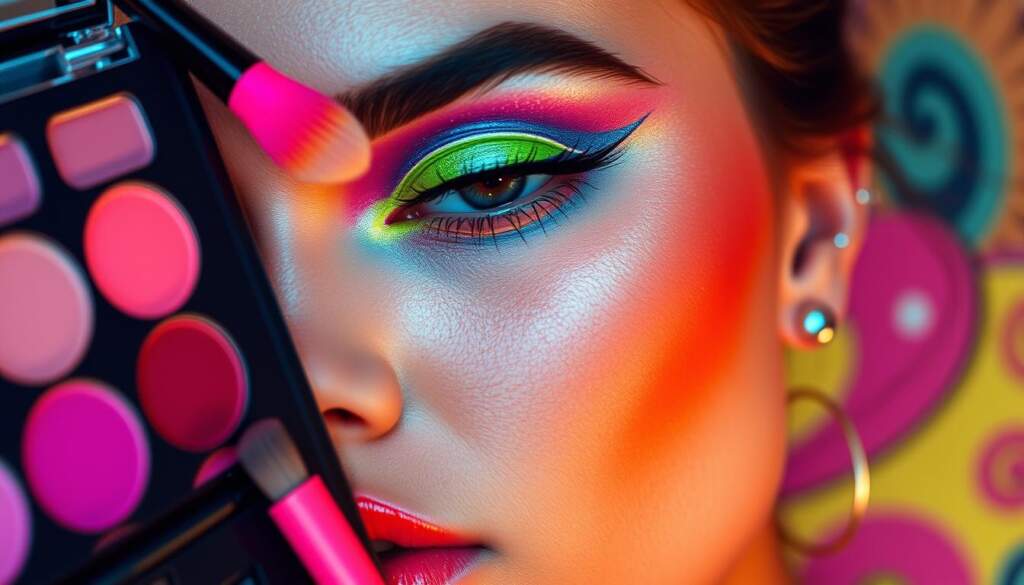

In response to this colorful trend, the fashion industry has been keen to adapt, offering clothing lines that feature vibrant color combinations which strongly appeal to Gen Z consumers7. Even beyond fashion, color has started influencing other sectors, including automotives, where brands like Hyundai introduce cars in shades like Buttercream Yellow and Sienna Orange Metallic, aligning with youth preferences7.
The beauty industry is also evolving, expanding its color ranges to include these vivid palettes. Advances in technology like virtual makeovers are encouraging users to experiment with these shades temporarily, allowing them to dip into vibrant beauty without long-term commitment. This trend underscores a broader movement within Gen Z: a push towards more vibrant, inclusive, and expressive modes of self-styling.
Neon’s resurgence is more than just a nod to nostalgic eras; it’s a bold statement from a generation ready to make their mark with looks that are as unique as their personalities. The message is clear: for Gen Z, the brighter and more distinctive, the better.
Inclusive Beauty: Celebrating Diversity in Makeup and Skincare
As societal norms evolve, the beauty industry is playing a significant role in advocating for inclusivity and diversity, molding how beauty products are marketed and produced to cater to a broader audience. Inclusive beauty isn’t just a trend; it’s a substantial shift reflecting societal demands for representation across all fronts from skin tones to gender identities.
The Shift Toward Extensive Shade Ranges
With 45% of US consumers defining a diverse brand by its ability to create products for people with different skin tones and hair types8, many brands are redefining their product lines. Fenty Beauty, for instance, shook the industry by launching 50 foundation shades, a move that paved the way for what many now expect as standard9. The broadening of diverse shade ranges has not just been about color but about emphasizing the importance of beauty representation.
Representation Matters: The Push for Diverse Beauty Icons
The call for diversity is echoed in advertisements where 43% of consumers appreciate seeing different types of beauty8. This support climbs higher among women, with 50% expressing happiness in seeing varied beauty representations in media8. Brands are steadily realizing that authenticity in their campaigns resonates deeply with consumers, illustrating a need to destigmatize flaws as 57% of Americans believe beauty brands should actively participate in this movement8.
Social Media as a Platform for Change in the Beauty Industry
Social platforms like TikTok have become arenas where TikTok influencers and everyday users alike can voice their opinions and influence brand behaviors. Remarkably, 67% of consumers think social media sets challenging beauty standards, yet it also provides a space to challenge and change these narratives8. The visibility and viral nature of TikTok campaigns have allowed underrepresented groups to spotlight brands that uphold inclusive values, leading to significant consumer shifts towards these brands.
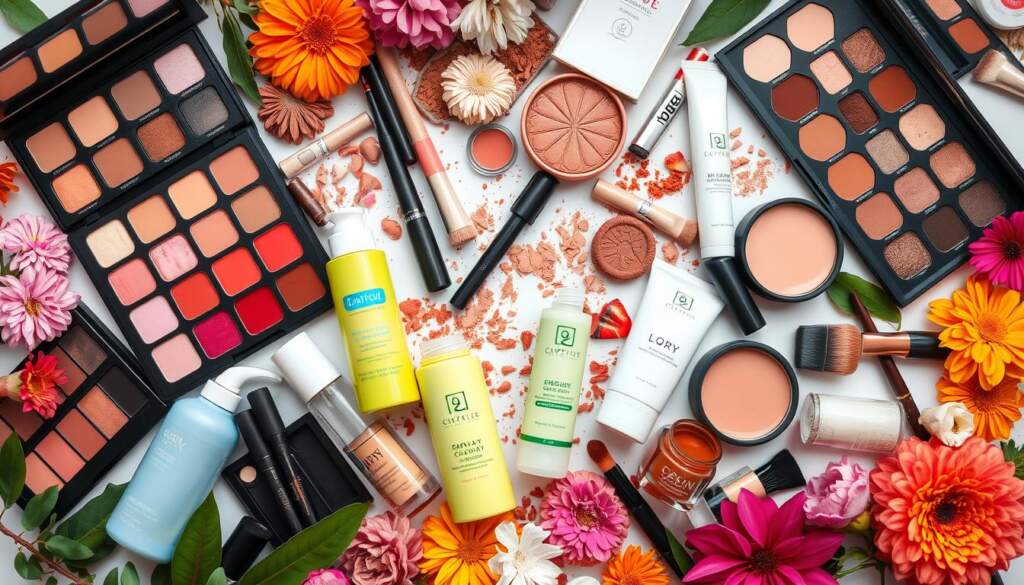

The influence of social media and the demand for inclusivity have created a compelling narrative in the beauty industry, leading to more mindful, progressive approaches to product development and marketing. Diversity in beauty has transitioned from a niche appeal to a mainstream expectation, fundamentally altering how brands approach and portray beauty.
The Latest Beauty Trends Taking Over Social Media
In a digital era dominated by rapid content consumption, social media beauty trends are continuously reshaped by the dynamic interplay between beauty influencers and their followers. Platforms like TikTok have not only popularized unique makeup trends but have also become a cornerstone for innovative skincare regimens that cater to a diverse audience. Engaging content, driven by the real-time interactions of users, significantly dictates what becomes a trend on social media10.
The power of TikTok beauty hacks cannot be understated, with the platform achieving a staggering 176% growth in media impact following content uploads, clearly showing its potent influence in the beauty industry11. Moreover, the role of user-generated content, from transformative tutorials to compelling testimonials, provides authentic feedback and fosters a community of shared beauty wisdom10.
This integration of beauty trends is profoundly affected by the algorithms of social media platforms, which curate content based on user interactions10. Such algorithms propel trends to viral status, rapidly elevating them from niche hacks to mainstream must-tries. Furthermore, the prevalent use of hashtags like #bodypositivity and #naturalhair shows a significant shift towards more inclusive and diverse beauty standards, reshaping the landscape to embrace all users10.
| Trend | Community Impact | Key Products |
|---|---|---|
| Skincare Regimens | Boosts engagement with daily routines | CeraVe, NIVEA |
| Makeup Trends | Drives sales through tutorials | Kylie Cosmetics, ELF Cosmetics |
| Natural Beauty | Enhances awareness for diversity | Charlotte Tillbury, The Ordinary |
The educational influence of TikTok is also noteworthy, as over 90% of European users report discovering new makeup techniques through the platform, underscoring its role as a key educational resource for beauty enthusiasts11. This goes hand-in-hand with the realization that embracing social media trends, particularly those originated on TikTok, is crucial for brands and individuals aiming to carve out a unique niche in the competitive beauty market10.
“Staying on top of social media trends is essential for any beauty professional looking to remain relevant in an ever-evolving industry.” – Brillare Beauty Institute.
As we continue to navigate this vibrant digital age, the symbiotic relationship between beauty influencers, social media beauty trends, and consumer engagement will undeniably shape the future directives of the beauty industry, making platforms like TikTok indispensable tools for both learning and innovation in beauty culture10.
Eco-Conscious Choices: Sustainable Beauty’s Growing Appeal
As the beauty industry propels towards a greener future, eco-friendly products are not just a trend but a core aspect of innovation. The clean beauty market, valued at $8.7 billion in 2023, is expected to undergo an explosive growth, reaching $39 billion by 203312. This surge underscores a shift towards products that support not only skin health but also the health of the planet.
Gen Z’s influence is palpable, with their spending power projected at $12 trillion by 2030. This demographic leads the charge, preferring brands that offer sustainable beauty and are willing to invest more into eco-conscious beauty products12. Companies are responding by integrating sustainable materials in both primary and secondary packaging, reflecting a commitment to environmentally conscious beauty standards12.
The shift goes beyond mere preferences. With a significant 95% of consumers aiming for a more sustainable lifestyle, the demand for zero waste skincare and refillable solutions is more pressing than ever12. This isn’t just about reducing waste but also about embracing a lifestyle that respects environmental boundaries.
Brands like Wonderbalm are tapping into this market by offering all-natural formulas that cater to sensitive skin conditions such as psoriasis and eczema, thereby addressing both ethical and personal care aspects13. Moreover, personalized beauty solutions, valued by 76% of consumers, are more likely to include sustainable practices, as they align personal benefits with broader ecological impacts14.
Finally, the movement towards clean beauty isn’t just about the final product but also the packaging. The sustainable packaging sector is booming, projected to see considerable growth from $310 billion in 2022 to $518 billion by 2030. Similarly, the paperboard demand is expected to rise significantly, reflecting changes in consumer packaging preferences towards more sustainable options12.
For more insights on how these trends are growing, you can subscribe to our weekly newsletter.
Conclusion
The beauty industry has experienced a seismic shift due to the powerful combination of beauty trend insights, Gen Z influence, and the demand for a sustainable beauty future. Social media platforms have been instrumental in facilitating this change, allowing for the representation of diverse body types, skin tones, and gender identities, thereby fostering a more inclusive approach to beauty. This rise in visibility is a testament to the social media impact on beauty, where influencers share their skills and amass loyal followings that directly contribute to brand visibility and consumer purchasing decisions15.
The pulse of the beauty world can almost be measured through the rapid spread of trends among these digital communities—trends that are as likely to emerge from a genial post as from a YouTube tutorial watched by millions16. The mirror that social media holds up to society reflects a vibrant, diverse, and creative space. Here, the selfie culture not only influences beauty standards but also empowers individuals to utilize platforms such as Instagram and Facebook for showcasing their unique expression of beauty trends, which in turn spirals into viral brand exposure16.
In consideration of these evolutions, it is clear that Gen Z’s sway will perpetuate the move towards authenticity, creativity, and eco-conscious choices within the realm of beauty. As these trends continue to be avidly shared and celebrated across social media channels, they not only reshape consumer habits but also signal a transformative shift towards a sustainable beauty future—a narrative that unfolds daily through every post, like, and share1516.
FAQ
What are the latest beauty trends dominating social media?
How does Gen Z beauty differ from previous generations?
Why is ‘skinimalism’ gaining popularity?
What aspects of early 2000s makeup are making a comeback?
How are neon hues influencing today’s makeup trends?
In what ways is the beauty industry becoming more inclusive?
How are beauty influencers impacting the industry?
Why is sustainable beauty becoming more important to consumers?
Can social media platform features like TikTok’s shoppable links impact the beauty industry?
Source Links
- The Impact of Social Media on Beauty Trends – Hollywood Institute – https://www.hi.edu/blog/the-impact-of-social-media-on-beauty-trends/
- The Impact of Social Media on Beauty Trends and Careers – FTC Florida Technical College – https://ftccollege.edu/blog-post/the-impact-of-social-media-on-beauty-trends-and-careers/
- The Rise of Skinimalism – The Glitz Media – https://theglitz.media/the-rise-of-skinimalism/
- The Rise of Skinimalism and What it Means for the Korean Beauty Market – https://toppandigital.com/us/blog-usa/skinimalism-korean-beauty-market/
- Every Y2K Beauty Trend To Try This Fall – https://www.nylon.com/beauty/how-to-wear-y2k-beauty-trends-hair-makeup-fall
- Y2K Fashion Is Back: How To Rock The Retro Trend In 2024 – https://www.stylerave.com/y2k-fashion-trend-2024/
- how Gen Z is painting the world – https://www.hyundai.news/eu/articles/stories/the-colour-revolution.html
- Demand for inclusivity in beauty gets louder – https://www.mintel.com/press-centre/demand-for-inclusivity-in-beauty-gets-louder-25-of-gen-z-feel-left-out-of-beauty-advertisements/
- Inclusion and Diversity in Beauty Marketing | Lyon Content – https://lyoncontentagency.com/why-diversity-in-beauty-marketing-matters/
- The Impact of Social Media on Beauty Trends – https://brillarebeautyinstitute.edu/social-media-impact-on-beauty-trends/
- TikTok Beauty Trends 2024: 10 Beauty Brands on TikTok Right Now – https://goatagency.com/blog/social-media-marketing/beauty-brands-tiktok/
- How the Cosmetic Industry Is Redefining ‘Clean Beauty’ – https://www.beautypackaging.com/issues/2024-09-01/view_features/how-the-cosmetic-industry-is-redefining-clean-beauty/
- O&3 predicts top natural beauty and personal care trends this autumn – https://cosmeticsbusiness.com/welcome-to-trendingnaturally-the-hottest-trends-in-natural
- How the wellness trend is impacting beauty formulation: Top tips for personal care innovation | Croda Beauty – https://www.crodabeauty.com/en-gb/resources/blog/wellness-trend-is-impacting-beauty-formulation
- The Impact of Social Media on Reshaping the Beauty Industry – https://insightscare.com/the-impact-of-social-media-on-reshaping-the-beauty-industry/
- Importance of Social Media in the Beauty Industry – https://bocabeautyacademy.edu/importance-of-social-media-in-the-beauty-industry/
